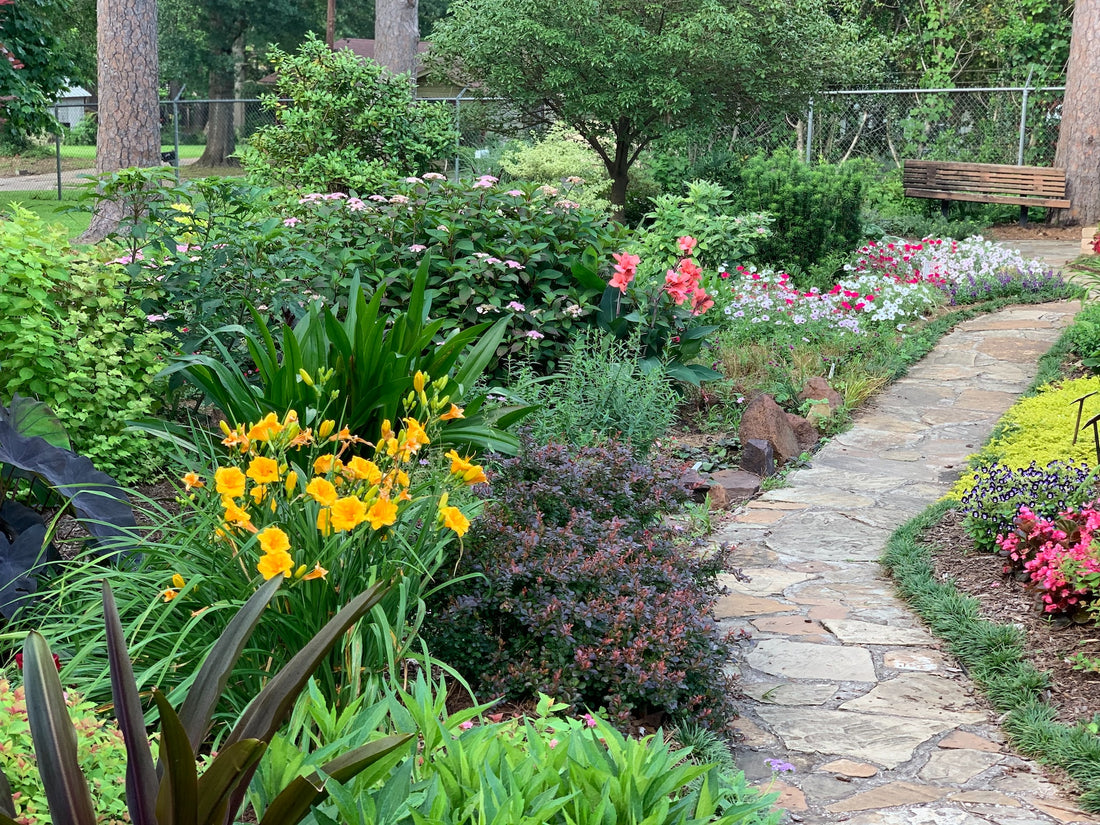A low-maintenance perennial garden is a must-have for every home, apartment, or spot of land. Nothing beats bright and beautiful flowers that arrive every year with minimal effort on your part. The key to a successful, genuinely low-maintenance perennial flower garden is planning. Do it right and reap the rewards for years, possibly even decades.
1. Keep it Simple: Limit the Variety of Plants
When it comes to creating a low-maintenance perennial garden, less is more. Limit the variety of plants in your garden to make it easier to maintain. Choose 5-10 varieties that thrive in your climate and suit your personal taste. By focusing on a select few plants, you can better organize your garden and keep it looking neat and tidy.
2. Use Organic Matter for Healthy Garden Beds
Incorporate organic matter into your garden beds to reduce weed growth and minimize water needs. Compost, leaves, or grass clippings can improve soil quality, provide essential nutrients, and retain moisture. Not only will this benefit your plants, but it will also reduce the time you spend watering and weeding.
3. Select Low-Maintenance Plants
When choosing plants for your low-maintenance perennial garden, opt for varieties that require minimal care. Drought-tolerant plants are an excellent choice as they can withstand dry conditions and require less watering. Native plants are another great option, as they are well-adapted to the local soil and climate. Additionally, consider evergreen shrubs and non-invasive perennials that won't require frequent pruning or maintenance.
4. Avoid Plants That Attract Pests
To minimize the need for pest control, avoid planting perennials that attract common garden pests such as snails, slugs, aphids, deer, and rabbits. By selecting pest-resistant plants, you can reduce the time and effort spent on pest management. This can be somewhat tricky since these pests are often quite determined. Plan on putting some fencing around the garden to keep bunnies out and get natural deer repellants so they don't eat all your beautiful plants.
5. Embrace Ground Covers
Using ground covers in your garden not only adds beauty but also helps suppress weed growth. Mulch, pea gravel, and river rock can serve as effective ground covers that reduce the need for watering and weeding. Consider incorporating these elements into your garden design to create a low-maintenance landscape.
6. Steer Clear of Support-Dependent Plants
To save yourself from the hassle of staking and supporting tall plants, avoid varieties that require additional support. Instead, choose compact and sturdy perennials that can withstand wind and rain without falling over or getting damaged. This will significantly reduce the time and effort spent on plant care.
7. Plan Your Garden's Layout Strategically
When planning your low-maintenance perennial garden, pay attention to the layout and placement of your plants. Consider each plant's mature size and growth habits to ensure they won't outgrow their space or encroach on other plants. By strategically planning your garden's layout, you can minimize the need for transplanting or rearranging plants in the future.
8. Incorporate Hardscape Elements for Easy Maintenance
Integrating hardscape elements into your garden can add visual interest and reduce maintenance requirements. Patios, arbors, pergolas, and gazebos can create focal points and define different areas of your garden. Opt for natural stone, brick, tile, or concrete materials that are durable and require minimal upkeep.
9. Install an Efficient Watering System
Invest in an irrigation system, such as drip irrigation or soaker hoses, to automate your watering routine and conserve water. These systems deliver water directly to the root zone, reducing evaporation and ensuring efficient water usage. By installing an efficient watering system, you can take most of the work out of maintaining your perennial flower bed.
10. Embrace Container Gardening
If you have limited space or want more flexibility, consider container gardening. Growing low-maintenance perennials in containers allows you to easily move them around, control their growth, and minimize weed problems. Choose containers that provide good drainage, and use a high-quality potting mix to ensure your plants thrive.
11. Create Relaxing Seating Areas
Make your low-maintenance garden a place to relax and enjoy by incorporating seating areas. Whether it's a simple bench, swing, or outdoor furniture, create spaces where you can unwind and appreciate the beauty of your garden. Choose materials that are weather-resistant and easy to clean to minimize maintenance tasks.
12. Keep a Garden Journal
Maintaining a garden journal can help you stay organized and keep track of essential tasks and observations. Note watering schedules, fertilizer applications, and pruning reminders to ensure your garden stays healthy and vibrant. A garden journal can also be a valuable reference for future garden planning and maintenance.



